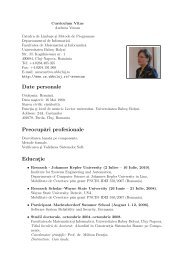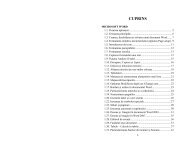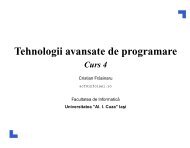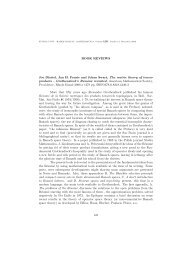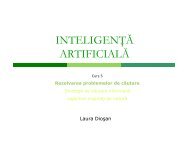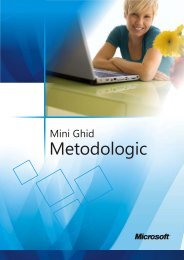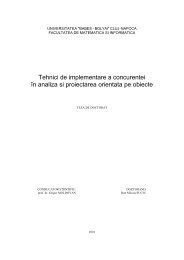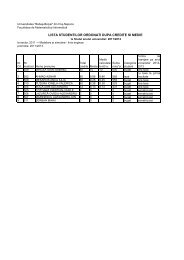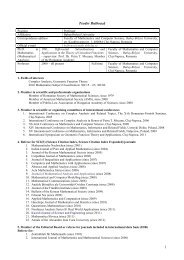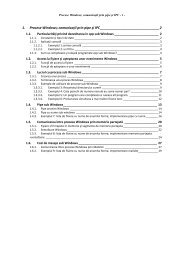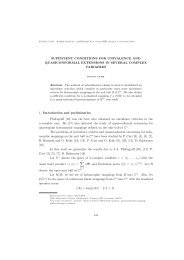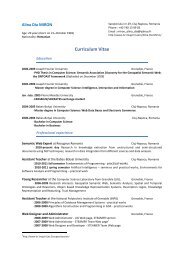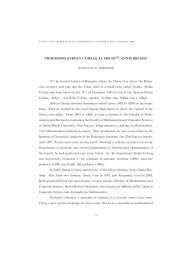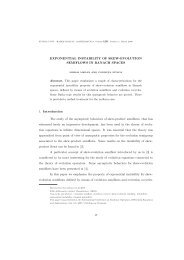CONTENTS
CONTENTS
CONTENTS
You also want an ePaper? Increase the reach of your titles
YUMPU automatically turns print PDFs into web optimized ePapers that Google loves.
KNOWLEDGE ENGINEERING: PRINCIPLES AND TECHNIQUES<br />
Proceedings of the International Conference on Knowledge Engineering,<br />
Principles and Techniques, KEPT2009<br />
Cluj-Napoca (Romania), July 2–4, 2009, pp. 235–238<br />
ALGEBRAIC MODEL FOR THE SYNCHRONOUS SR-FLIP-FLOP<br />
BEHAVIOUR<br />
ANCA VASILESCU (1)<br />
Abstract. Considering the digital logic level of the computer architecture description,<br />
the agent-based approach is applied here to cover both the digital<br />
logic circuits specification and verification. We consider the specific structure<br />
for both the asynchronous and synchronous SR flip-flops. We define the appropriate<br />
specification and implementation agents for algebraic modelling the given<br />
circuits behaviour and we formally and automatically prove the corresponding<br />
bisimilarities between the target agents.<br />
1. Introduction<br />
This paper results represent the authors research area consisting in applying<br />
formal methods for modelling the hardware components behaviour and in obtaining<br />
an algebraic-based model for the entire computer system behaviour.<br />
Having an algebraic-based model for a multi-agent system has the main advantage<br />
of increasing the level of confidence and reliability on the model following the formal<br />
methods based verification. For the specific case of a computer system, we have also<br />
the advantage of the opportunity of removing all the possible design errors before<br />
proceeding to the expensive component manufacturing and assembly.<br />
In modern computer science, the process algebras are extensively used together<br />
with the appropriate verification tools such that the combination assures both the<br />
modelling of the computer components behaviour and the formal and/or automated<br />
verification of the proposed models. The most used such combinations are: SCCS/CWB,<br />
CSP/FDR2 and LOTOS/CADP [1, 8]. The SCCS as process algebra and CWB-NC<br />
[9] as verification workbench are used here in order to study the concurrent communicating<br />
processes involved in the computer hardware components behaviour and to<br />
model and verify the target hardware components behaviour.<br />
2. Preliminaries<br />
2.1. Flip-flops. Computer memory organization. A flip-flop is a sequential<br />
circuit, a binary cell capable of storing one bit of information. It has two outputs, one<br />
2000 Mathematics Subject Classification. 68Q85, 68N30, 68Q60, 93C62.<br />
Key words and phrases. bisimulation equivalence, concurrency workbench, digital circuits, flipflop,<br />
SCCS process algebra, specification, verification.<br />
235<br />
c○2009 Babe¸s-Bolyai University, Cluj-Napoca



